How to Buy a Good Pocketknife or Multitool
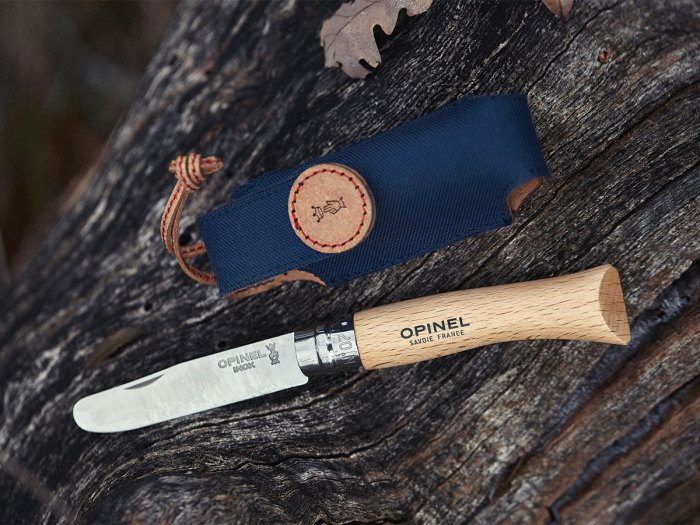
Opinel’s No.07 My First Opinel Folding Knife ($17, opinel-usa.com) is sharp but without a point. The 3.5-inch blade is made from Sandvik stainless steel, and it holds an edge. The outdoors version ($26, scoutshop.org) also has a built-in whistle to call for help in an emergency.
With proper training, many Scouts can use a knife — a valuable tool for camping or working on a whittling project. A multitool provides multiple blades and other tools. Examples are saws, drivers and even forks and spoons.
A knife is not a toy. If you’re a Bear, Webelos or Arrow of Light Cub Scout, earn your Whittling Chip. If you’re in Scouts BSA, earn your Totin’ Chip. Then you will know how to safely carry and use one of these tools.
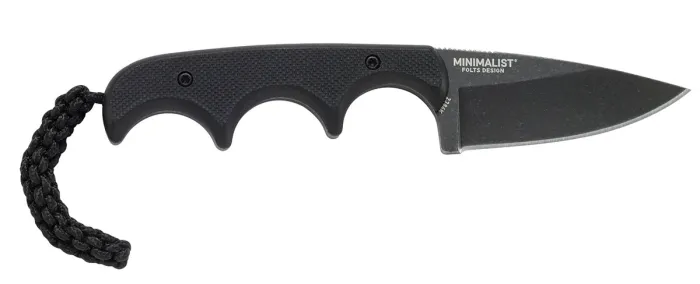
The CRKT Minimalist Drop Point ($36, crkt.com) has a 2-inch fixed blade with a tough handle that’s comfortable to hold. The carbon-steel blade sharpens quickly, and the half-ounce durable thermoplastic sheath has multiple mounting options.
KNIFE BASICS
There are several types of knives.
All-purpose folding pocketknives are common in Scouting. Most come with tools such as a can opener, screwdriver, tweezers and, of course, knife blades — all in one compact package. Though they can be extremely handy, a downside is the knife blade doesn’t lock into place, so it may fold up on your hand while you’re using it.
Lockbacks are simple folding knives with a single blade that can be locked. So you get the benefits of a sturdy fixed blade-style knife but in a convenient pocket-size package that can be folded open with just one hand.
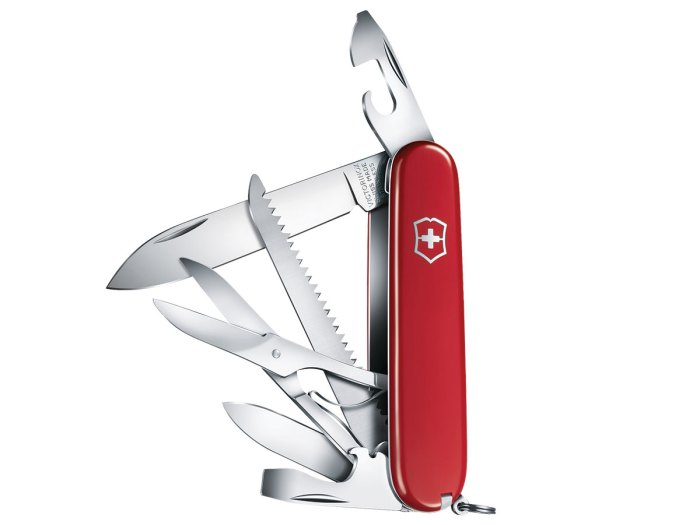
Scouts have been using Victorinox Swiss Army knives for a long time. The Victorinox Swiss Army Huntsman ($50, victorinox.com), a multitool with first-aid functions, has a suite of transitional tools, including a can opener, scissors and tweezers — plus large and small blades, saw, awl, leather punch and more. It pretty much has everything you need.
Fixed blades, are no-nonsense knives with a beefy handle and stationary blade. If you need a knife to accomplish the everyday tasks you come across in the outdoors, from whittling on things and cutting materials to spreading peanut butter on your sandwiches, a short, no more than four-inch-long, fixed-blade knife will accomplish all of that. Avoid large sheath knives; they are heavy and awkward to carry.
You’ll also find specialty knives such as river rescue knives with serrated blades for slicing rope, whittling knives designed for carving wood, and multitools, which are compact, handheld tool boxes. Most are built around a pair of folding pliers.
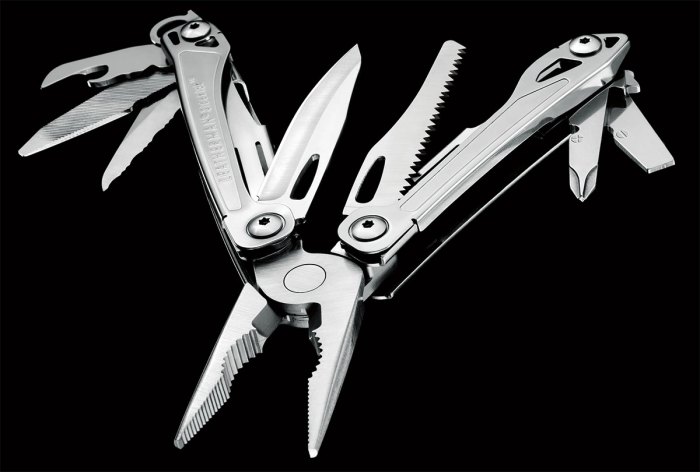
The Leatherman Sidekick ($70, leatherman.com) is a stainless-steel toolbox on your belt. The 7-ounce Sidekick has spring-action needle-nose and standard pliers, wire cutters and stripper, knife and serrated knife, saw, ruler, can and bottle openers, wood and metal file and three screwdrivers.
FOLDING OR FIXED KNIFE? KNOW THE POLICY
Knife policies vary among packs, troops, councils and camps when it comes to what blade types and lengths are allowed. Learn your unit’s policy before buying a blade of any kind. When it comes to types of knives, the Guide to Safe Scouting recommends “choosing the right equipment for the job at hand.”
BLADES
Most blades are made from strong and durable stainless steel. Blades are available in straight edge, serrated (jagged like a saw) or both. Bigger is not always better. A small, sharp four-inch-or-smaller blade can cut just as well as bigger knives but is much safer to handle and easier to maneuver in tight spots.
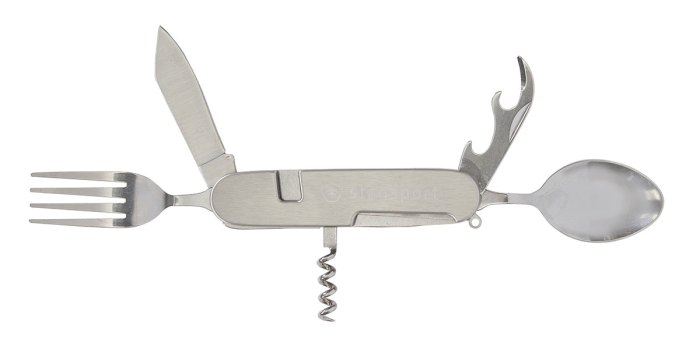
Stansport’s Folding Knife, Fork, Spoon Multitool ($15, stansport.com) has more than eating utensils. The tool, which separates into wo so you can use fork and spoon together, also has a can opener, corkscrew and chisel all in a belt-ready nylon carrying pouch.
PRICE AND QUALITY
You don’t have to spend a fortune to get a quality tool. Often, an inexpensive knife will do everything you want it to do. As prices go up, you’ll see small improvements in the quality and size of the blade.
CARE AND MAINTENANCE
Knives and multitools can last your whole life if you care for them. Wipe your pocketknife with a damp cloth to clean it, and add a drop of food-safe oil at pivot points to keep it at its best. Use a sharpener to keep your blade sharp.
“A sharp knife will work for you, while a dull one works against you,” says Kyle Owens of Work Sharp, a company that makes sharpeners.
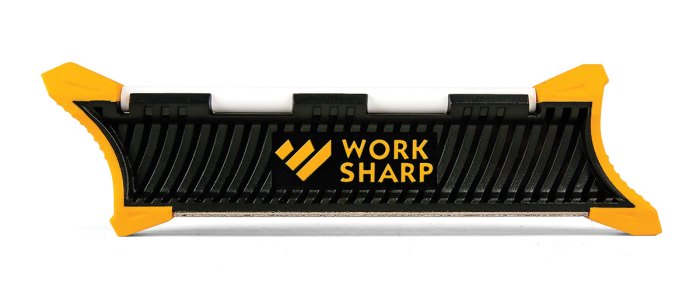
A great knife deserves an equally great sharpener. Work Sharp’s Pocket Knife Sharpener ($15, worksharptools.com) is small enough to stash in your pack, with a diamond sharpening plate and ceramic honing rod that have built-in angle guides so you can get a perfect edge on your pocketknife.
CARRY IT SAFELY
The smartest, safest place to stash your knife is in an easy-access spot in your backpack. You’re asking for trouble by wearing a fixed-blade knife on your belt. If you fall, the knife could rotate inward and you could land right on the blade.
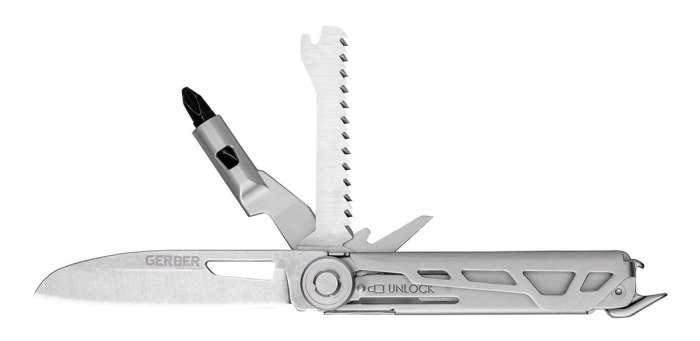
At only 3.1 ounces, Gerber’s Armbar Trade ($50, gerbergear.com) has eight essential tools, including a knife, saw, awl, driver, pry bar, hammer and bottle opener, packed into a surprisingly small and effective pocket clip tool.
TREAT YOUR KNIFE WITH RESPECT
Treating pocket knives with respect not only ensures your safety, but also keeps others safe. Here are a few major no-no’s:
- Throwing a knife
- Using a dull or dirty blade
- Handing a knife to someone blade first
- Cutting while others are within your “safety circle” (arm’s length)
- Carving into something that doesn’t belong to you
- Cutting toward your body
Using a knife requires responsibility. Bear Scouts can start carrying a pocketknife after completing the Whittling Chip requirements. Members of Scouts BSA must earn their Totin’ Chip, which also gives them the right to carry and use axes and saws.
carolina knives r pretty vice along with buck knives i have both
Swiss Army Knifes Are The Best!!!!!!!!!!!!!!! : )
Thats a good deal for a 75-piece tool. Do you know what all the tools are?
I’ve got a Swiss Army knife. It’s been really helpful on camp-outs and it’s cheep. Another thing that makes it handy is that it’s glow-in-the-dark so I never lose it.
swiss army knifes are asome!
what knife for 15 bucks?
it would be kool to see some knife reviews.
A lock blade can be good when using your knife point (such as when whittling holes in things), however, for simple woodcarving and ninety percent of the other uses of a pocket knife a standard folding blade is generally fine, especially if you practice standard knife safety when using it. I’ve carried a knife for over 20 years and while I have cut myself on occasion, can’t remember a single time it’s been because the blade folded on me. (Though I do have a friend who buried his blade in his thigh because he was playing with the locking feature).
As for the huge multi-tools, ensure that the handle isn’t too big to be unwieldly. The fatter the ‘pocket’ knife, the easier it can be for it to slip out of your hand while using it, meaning the more ‘uses’ advertised, the less useful it can sometimes become.
If you get a pocket or folding knife it should have a lock-blade feature. You can get a bad cut from it folding up on you if you don’t. I prefure one bladed lock blades or fixed blades.
i have a really nice pocket knife
The Gerber multitools are very well rated I carry the proscout 600 . I also carry a Benchmade 705 that does every thing I need. Sadly they no longer make this one. Check EBAY. I chose these after reading a survival website.